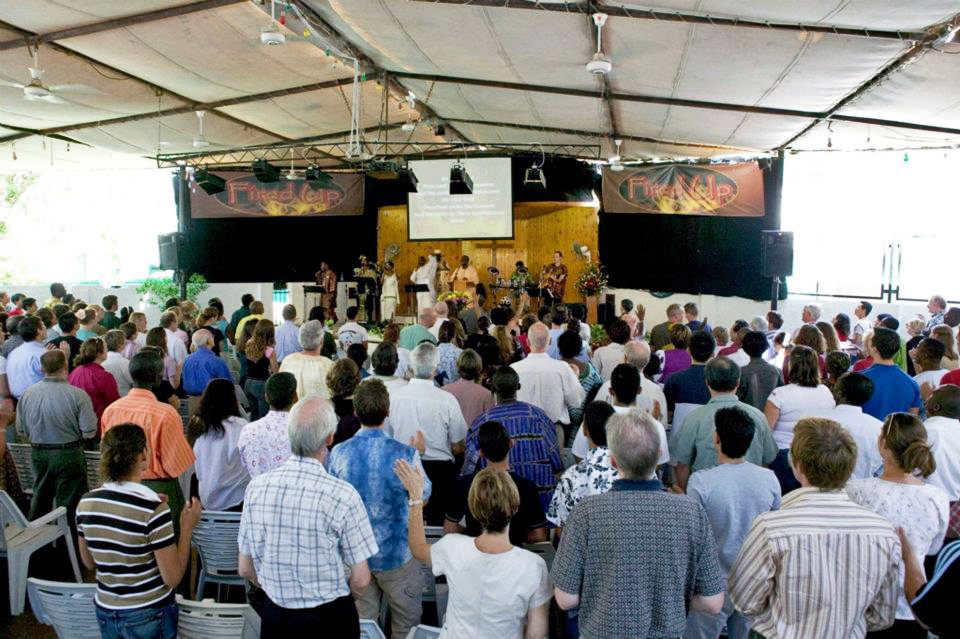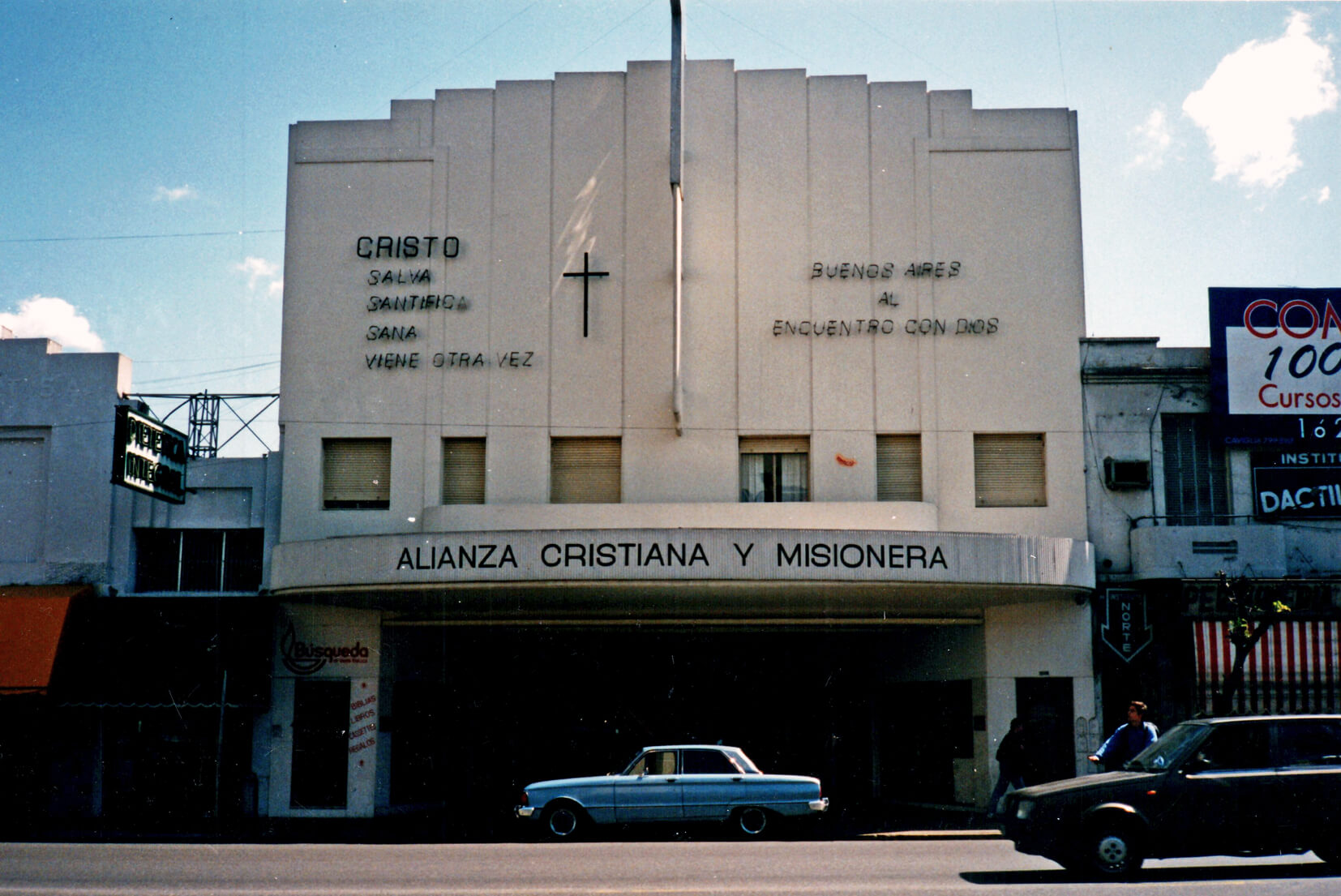You have probably seen one. It is called an autostereogram. It is an image that, at first glance, is impossible to see. What looks like a random pattern of colours slowly becomes clear if one stops to focus with expectation. Christopher Tyler, the pioneer of this way of seeing, discovered how 2D images, when presented in a specific pattern and light, had 3D potential to be slowly grasped by the human eye.
New inventions like this remind us that life is full of opportunities to see deeper and clearer what is not always visible at first glance. For Christians, this is urgent work which awaits all those who are serious about reaching those who do not see the Father’s love for the world clearly. This love will always be consider ed a mystery and thus it is never easy to see. It requires focus, rooted in an expectant heart, knowing that God loves to show up and set people free.
ed a mystery and thus it is never easy to see. It requires focus, rooted in an expectant heart, knowing that God loves to show up and set people free.
As a church planter in Quebec, I am regularly reminded that people need extra time and help to see what God might be trying to show them. Years of pain and confusion associated with churches, religious beliefs, and the message of Christianity clouds things and adds layers of complexity. Yet, having spent some time reflecting on the larger history of Christianity, I know that every season provides new opportunities to learn and rearticulate the faith in new ways. As the theologian Richard Bauckham has noted, “The biblical story refuses to be summed up in a final adequate interpretation that would never need to be revised or replaced.”1
Surely, we are not talking about replacing Jesus but instead replacing our ideas—or limited 2D categories—for much richer and deeper language that will point people to the loving mystery of the Father, in the Son, by the power of the Spirit. No matter your context, God will provide new ways to help you see His love at work in your life, so that you can help others to see this mystery they are being invited into.
Jesus’ Invitation to See More
Paul, who had to be blinded before he could see, reminds us that Jesus is the image of the invisible God. It was in Jesus the Son that a broadened portrait of what the Father’s love means for us now was made clear. And yet, some could not see that. Those who read the Scriptures, who knew the prophets, were unable to see. There seems to be a type of spiritual blindness that grips those who are insiders for too long. For this reason, Jesus’ followers are called to go. It is in the going that our eyes readjust to the new flashes of God’s light redeeming the world. While the Hebrew people will always have a unique place in God’s revelatory plan, they were the beginning of it, not the end. Where is God calling you to go? There you will see.
For some of us this is a lesson we still must continually relearn. How is God readjusting how you see your context, your city, your kids, your church? Is it making you humbler and thus hungry to learn about the depths of His love? We often believe that people will come and see the truth of Jesus in the same way that we did. This is normal but limiting in many ways. For this reason, we need a new conversation in our churches, in our schools, and in our homes, that not only addresses what people see but how they see.
Learning to See Again
We are living in a time when the Church needs to get more serious than ever about how people are choosing to see. The old models of following the rules, or obeying the words of an authoritative figure, have long been trampled by our postmodern concepts of knowledge. Furthermore, the Digital Revolution and the rise of social online interconnectivity has changed the rules about how we learn and how we hear the stories of others. This is the new canvas that we must draw on if we want to help people see the mystery of how Jesus presents to us the image of the invisible God, who is love.
Throughout Christian history, especially following the Reformation period, Jesus’ unique role as the Word of God took precedence. Subsequently, preaching the Word of God in a way that uplifts the Glory of Jesus as the Word became a rallying cry of the time. The Gospel of John presents Jesus as the “logos”, which we translate into English as “Word”. This was meant to refocus how we think of God’s love and its relation to the philosophical ideas of the time. The Word speaks and things happen. While this is always essential, we are wise to consider a shift that will address our own time.
As a hyper visual culture, we need a refocus to see that Jesus is not only the Word, but the image—the portrait—of the invisible Father whose love permeates His creation. The book of Colossians was for a church in Colossae that was to lead and make visible the mysterious love of the Father through the Son. At a time when many continue to think they can have Jesus without the church, we are wise to reconsider that Jesus is the Head of the Church and not just our lives. Only then will a world hungry to know how things can be held together in injustice and suffering understand that Jesus is at work restoring things by using those who are broken and blind to see.
If we are going to fulfill the mission of Jesus, we must return to a renewed biblical understanding of how to help future disciples of Jesus to see in new ways and to be open to reimagining how to humble ourselves before the mystery of Jesus at work through His servants. Mysteries, by their nature, cannot fully be grasped, but they can be experienced when 2D categories are infused by the Light of the World providing a 3D image that stirs us to desire to see the Kingdom of God come on earth as it is in Heaven.
As a hyper visual culture, we need a refocus to see that Jesus is not only the Word but the image of the invisible Father.
1Richard Bauckham. Bible and Mission: Christian Witness in a Postmodern World, Grand Rapids: MI. 2003, 93.
Share:
Find more posts about:
domenic.ruso
Support the mission
The Global Advance Fund (GAF) is a pooled fund that supports our workers in Canada and around the world to share the Gospel with people who haven't yet heard the name of Jesus. Your continued generosity equips and sustains our workers and their ministry.








